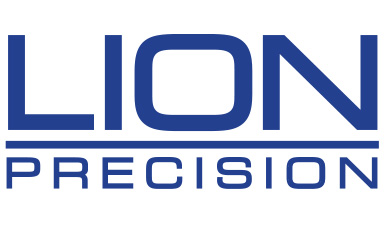Engineers are striving to obtain high-resolution accurate measurements at the same time coping with design requirements and implementation problems caused by limited space, temperature changes, vacuum, and target surface interference.
Eddy current and capacitive non-contact displacement sensors are becoming a standard technology for z-height measurement due to their compactness, flexibility, ease of use, high resolution, non-contact nature, and robust design. Eddy-current and capacitive sensors can also be customized to fit in specific z-height measurement applications.
Recommended Z-Height Measurement Equipment
Z-Height Measurement equipment includes the following:
- Elite Series Capacitive Sensors – less than 1nm resolution and requires a clean dry environment as shown in Figure 1.
- ECL202 Eddy-Current Sensor - less than 100nm resolution, works in wet environments, and does not detect non-conductors as shown in Figure 2.
.jpg)
Figure 1. Elite series capacitive sensors.
.jpg)
Figure 2. ECL202 eddy-current sensors.
Technologies
A wide range of technologies has been applied to these z-height measurements, each with its own set of challenges. Target surfaces can be damaged by contact gauging. Optical gauging can suffer from thermal sensitivity, inconsistent reflectivity of the target material, and may be difficult to fit in the space required. Certain capacitive products can suffer damage to internal electronics if the end of the probe touches a grounded surface.
Key Features of Lion Precision Sensors
Key features of Lion Precision capacitive and eddy current sensors are:
- Lion Precision capacitive and eddy-current sensors are thermally compensated, rugged, can have resolutions less than one nanometer, and bandwidths as high as 15kHz.
- They can be used in a vacuum and their low power dissipation will not add heat to a sensitive environment.
- They can also be customized for a perfect fit.
- Capacitive sensors provide the absolute highest resolution but must be used in a clean environment.
- Eddy-Current sensors can be used in wet environments while still providing resolutions below 100nm.
Applications and Industries
Z-Height measurement is common in industries that require accurate positioning for non-optical processing. Some applications include:
- Semiconductor wafer processing and inspection
- Microlithography
- Optical and non-optical microscopy
- Focus and prefocus
- Mask positioning and alignment
- Scanning control, and planarization.
These applications require critical positioning in cases where it is important to measure to the nanometer scale. They also include challenging environments from slurry-filled environments of chemical-mechanical planarization to the vacuum environments requiring low out-gassing and low power dissipation.
Mask Alignment Z-Height
Masks that are used in semiconductor processing must be aligned accurately to achieve today's circuit densities. Four non-contact probes can be mounted to monitor z-height and parallelism of the mask relative to the wafer. Parallelism is provided by maintaining equal outputs from the sensors while the actual output value indicates the critical gap dimension. Figure 3 shows mask alignment.
.gif)
Figure 3. Mask alignment Z-height.
Chemical-Mechanical Planarization (CMP Z-Height)
An accurate lapping process is used in a disk drive, semiconductor, and other industries that require a precisely controlled depth of material removal. The chemical-mechanical planarization process uses an abrasive slurry on a precision platen that turns against the object to be lapped. Material removal causes the carrier to hold the object being lapped to move closer to the platen.
The slurry is not detected by eddy-current sensors and hence offers an accurate measurement of the relative position of the platen to the carrier (z-height) to determine how much material has been removed.
High sensor resolution enables measurements within 100nm. For semiconductor wafers, the eddy-current sensors can "see-through" the wafer and the slurry to measure the distance to the platen. Figure 4 shows CMPZ height.
.gif)
Figure 4. CMP Z-height.
Focus/Pre-focus
Non-optical and optical microscopy requires accurate z-height positioning to maintain a clear focus. While optical algorithms exist for controlling focus, they can be slow while searching for the correct focus. It is possible to use non-contact sensors to move to a position very near the precise focal length where the optical algorithms can instantaneously complete the process.
Due to extreme demand and limited space for performance in many microscopy applications, there are significant advantages to using custom-designed probes.
Figure 5 shows the capacitive probes configured at 45°.
.gif)
Figure 5. Capacitive probes configured at 45°.
Scanning
Certain processing and inspection applications use a scanning head to treat or inspect across the surface of the target object. Z-height gap and alignment are still critical, but rather than a static control, this application is dynamic.
Lion Precision capacitive and eddy-current sensors have wide bandwidths of 15kHz with bandwidths as high as 80kHz when required. The excellent phase response and fast response time enable precise and stable servo control in dynamic applications. Figure 6 shows the scanning head.
.gif)
Figure 6. Scanning head.

This information has been sourced, reviewed, and adapted from materials provided by Lion Precision.
For more information on this source, please visit Lion Precision.